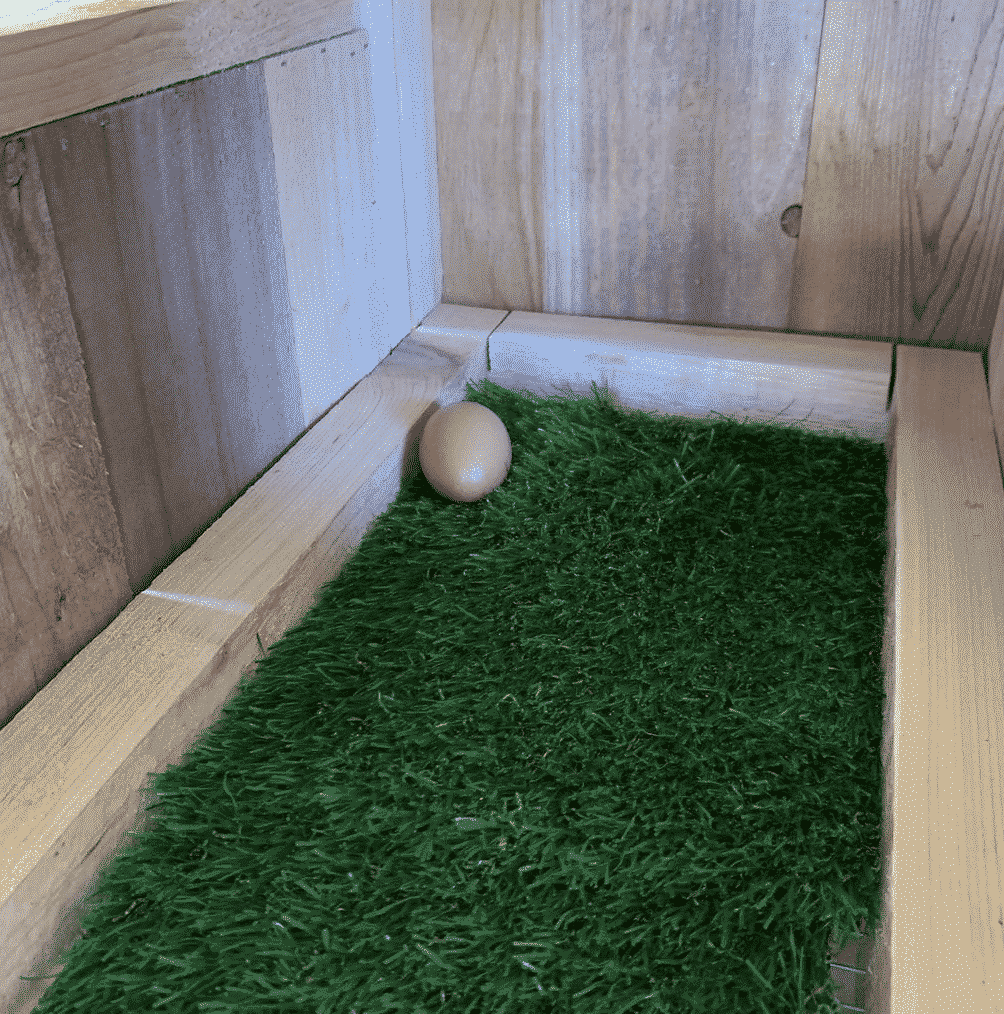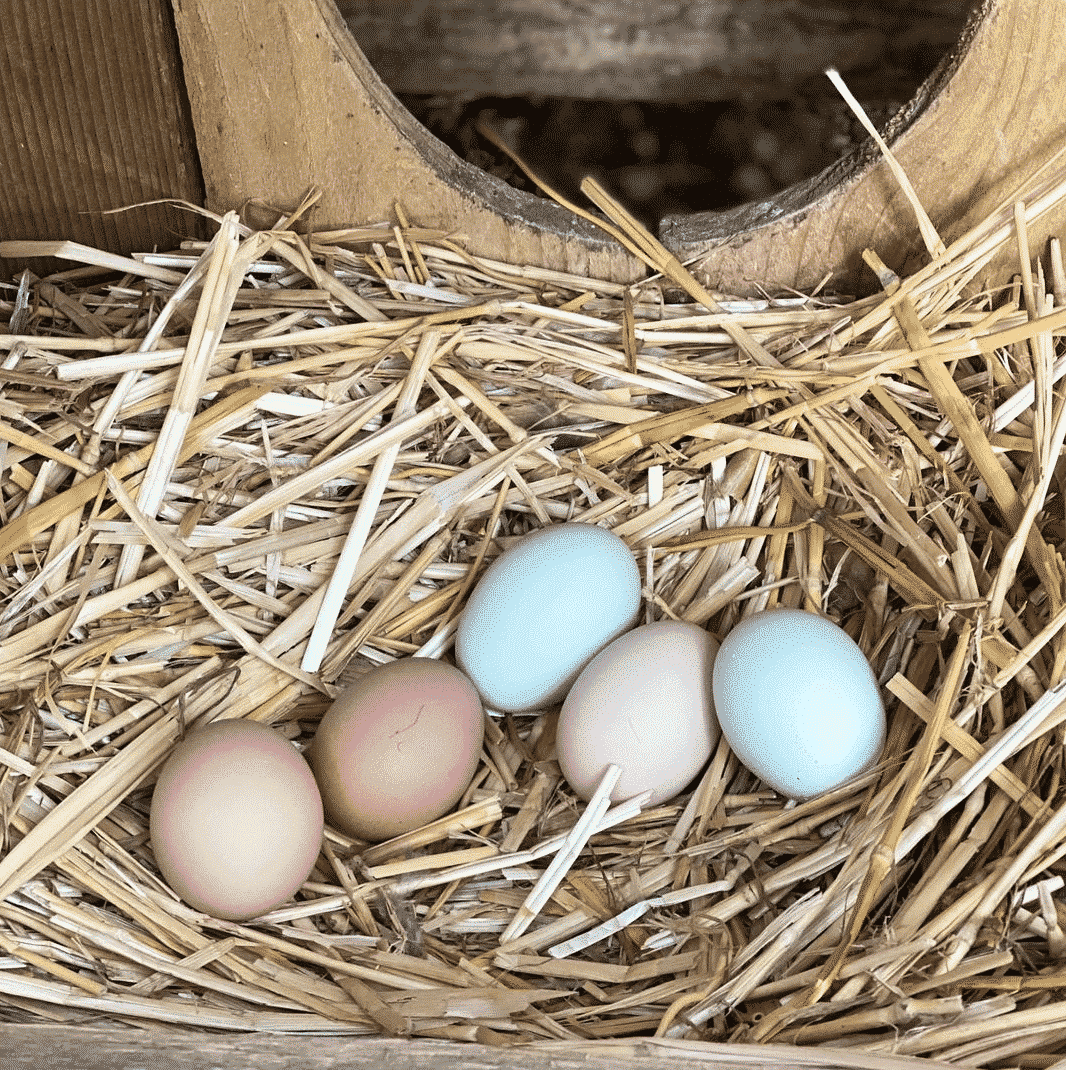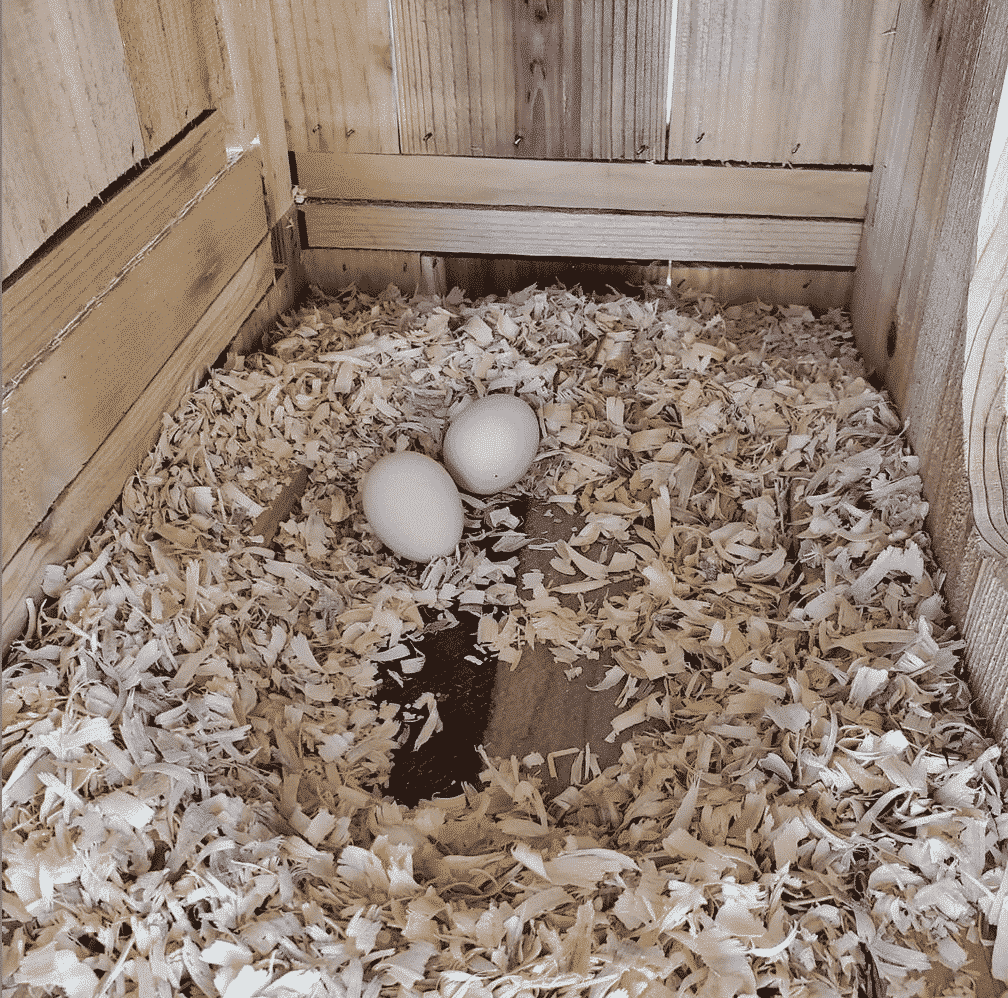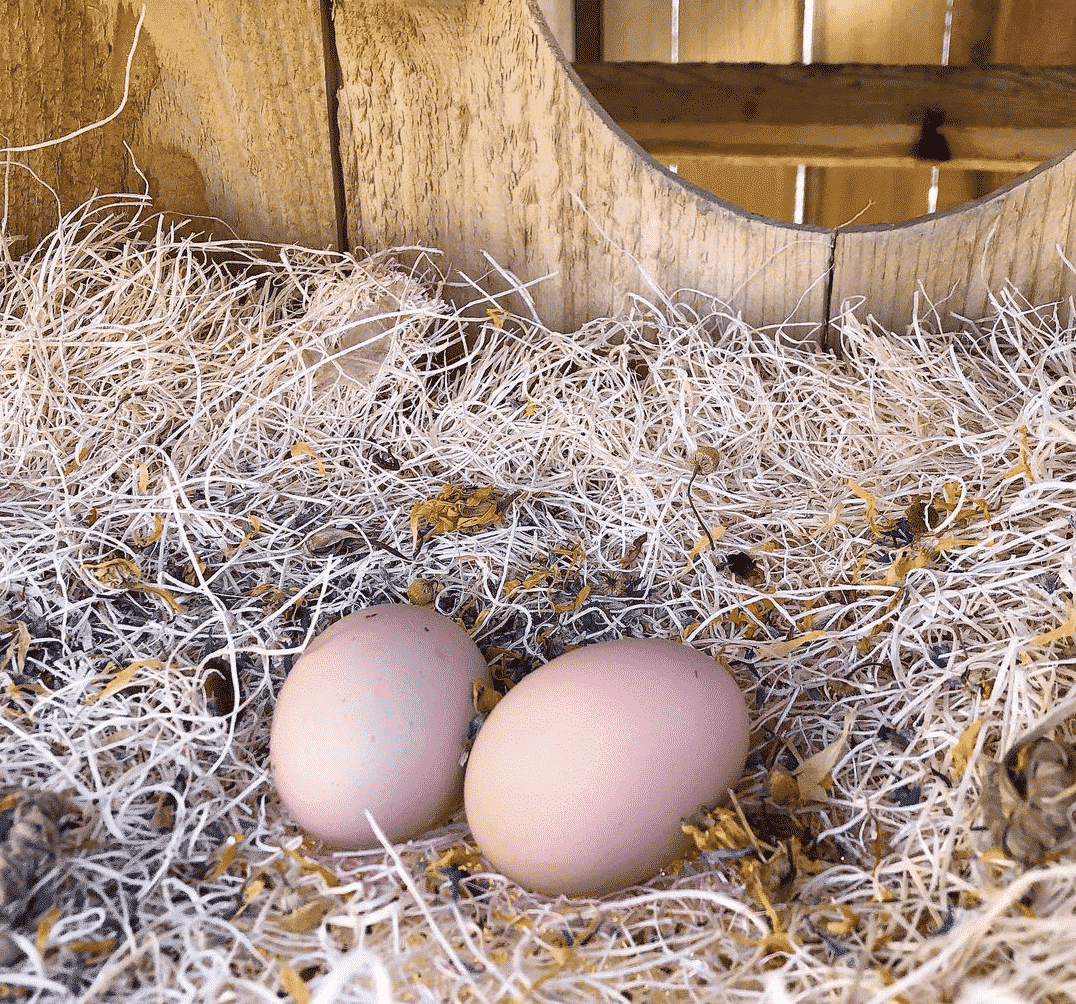
The nest box is without a doubt one of your coop’s most important features and one that you’ll want your birds to be both comfortable and happy with, requiring both privacy and consideration of space. Additionally, a nest box will need to be in a location that offers convenience for you, especially when it comes time to clean! If you have a Roost & Root coop, then your nest box is already ideally placed with only one significant part remaining…the nesting material!
When it comes to selecting a nesting material for your hard-working hens, it’s important to remember that your hens shouldn’t rely on the nest box as a comfortable location to rest. The nest box should first serve as a place of privacy, prevention of cracked eggs, an easy to clean space, then if desired, a pleasant space for a broody hen. With the following in mind, there are a few material options that our very own hens approve of and that we can certify as being coop-friendly!
Types of Nesting Material:
Nesting material often comes in two variations, reusable and disposable. Depending on your preference, both options serve as great choices! To decide which may be best for your hens, we’ve listed our top 5 options below!
Reusable Nesting Material:
Plastic Mat
- Plastic mats are our go-to nesting material. Not only are they simple to insert and put into place, but they are also beyond easy to clean! Although rare, a hen may accidentally crack an egg in the nest box, or worse, leave leftover droppings. A plastic mat allows you to easily spray down any mess before reinserting the mat into the nest box. Additionally, these mats are perfect for preventing mold and fungal growth!
Grass Turf
- Similar to plastic mats, grass turf is a great reusable choice, with the addition of a softer material. An even greater difference to this nesting material is the price. Although a few dollars higher, this material goes a long way in longevity.
Disposable Nesting Pads:
By now you may be wondering, if I can reuse my nesting material, why would I buy something that I’ll simply have to throw away later on? Disposable nesting material isn’t all that bad, yes, you’ll have to occasionally replace it, but quite honestly it won’t be as often as you may think!
Excelsior Pads
- A favorite among flock owners, excelsior pads are an absorbable and mess-free option for nest boxes. Made from woven straw, these nesting pads are slightly less inexpensive than reusable pads and are usually available in a pack. The way these pads are tightly intertwined and attached to kraft paper allows for excellent absorption of droppings. Then, when you’re ready to replace, simply slide out the pad without worrying about messy pieces falling.
Pine Shavings
- When it comes to using pine shavings in your nest box, there are some pros and cons. Pine shavings are very inexpensive, roughly for the same price as a grass turf nesting pad, you can get 8 cubic feet of pine shavings. Pine shavings, although loose, are great at absorbing any unwanted droppings. One of the biggest cons of pine shavings is how messy they can become! Your hens are likely to fluff up and scatter their nesting often, however, because pine shavings are biodegradable, you wouldn’t have to worry about collecting and disposing of this nesting option!
Hay
- A simple and more structured nesting box material, hay is a common choice for many homesteaders who may have a few other livestock/pets around already. Hay is easier to collect than pine shavings and can often be the cheapest nesting box option. However, unlike our reusable choices, hay does have its cons. Unlike pine shavings, hay doesn’t serve as a great absorbent, oftentimes getting matted from leftover droppings. In addition, high humidity or slightly moist hay may cause mold. Hay will also need to be monitored and replaced often to ensure your bird’s health and comfort.
Extra Nest Box Additions:
Potpourri is always a lovely addition to any room, and just like it, you can create a similar scentful option for your bird’s nesting box. If you don’t mind the loose petals and leaves, some flock owners enjoy sprinkling dry herbs into nest boxes, although not necessary, we like to imagine it enhancing your bird’s private egg laying experience. After all, a happy chicken does lay more eggs! For some herb-friendly options to consider, visit our blog post “8 Chicken Healthy Herbs To Grow Next to Your Coop”.
Tips for Getting Your Birds to Lay in Their Nest Box:
If you are transitioning your birds to their coop, then your flock may need some learning assistance before their egg-laying instincts kick in. Birds may first lay their eggs on the ground of their coop, or if free-ranging, they’ll leave you unexpected treasures anywhere! If you are raising your birds from chicks, it’ll take until week 18 for them to begin laying. If you need any assistance on transitioning your chicks to their new coop, visit our blog post, “From Brooder to Coop, When to Transition Your Chickens.”
To help your curious birds, we recommend placing fake eggs in their nest box. Your hens will lay their eggs right next to the mock eggs without concern of the occupancy. Once one hen is seen laying eggs inside, the rest of your flock will almost always follow in suit.
We hope you found these tips helpful as you decide which nesting material to choose. Have questions or comments regarding anything mentioned in this article? Please feel free to email us at support@roostandroot.com or give us a call at 877-741-2667. We’re real people and enjoy helping others with their backyard farming journeys.






